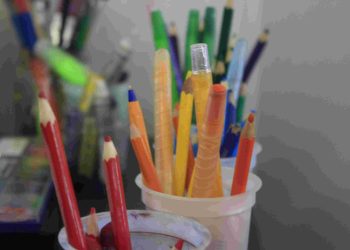Optimizing Creative Score Metrics for Marketing Strategy
“Creativity isn’t just a fleeting spark; it’s the cornerstone of transformational marketing strategies.”
In an age dominated by data-driven decision-making, the art of influencing hearts and minds often takes a backseat. But what if we could measure creativity with the same rigor as we measure clicks, impressions, and ROI? This question isn’t just theoretical—it’s at the core of a paradigm shift marketers must embrace.

The Undervalued Power of Creativity
Reflecting on my own journey in marketing, I recall the first major campaign I led. It was a blend of bold storytelling and striking visuals but stumbled in generating the expected numbers. What went wrong wasn’t the creativity—it was the inability to quantify and optimize its impact. Traditional metrics like CTR or CPM couldn’t capture the human connection we created. This was the moment I knew: creativity needed its own language of measurement.
Here’s what most marketers overlook—creativity doesn’t just attract attention; it drives action. Psychologists have long argued that emotional engagement heightens memory retention, yet many campaigns fall short of delivering this cognitive hook. Creativity bridges the gap.
Challenging the Norm: Rethinking Metric Systems
The industry’s over-reliance on traditional metrics is akin to navigating an ocean with a map that omits key landmarks. While CTR, CPA, and engagement rates are useful, they ignore the qualitative element—the “why” behind consumer behavior. Creativity might not be tangible, but it drives results. Think of it like gravity: invisible yet omnipresent, pulling everything toward the ultimate goal.
To challenge the status quo, let’s borrow from psychology and introduce metrics like Emotional Resonance Index (ERI) or Contextual Engagement Score (CES). These indicators would measure how a campaign emotionally connects with its audience within specific socio-cultural frameworks. Combined with existing analytics, these scores could offer holistic insights.
Imagination Meets Data: Cross-Disciplinary Lessons
Tech titans like AI innovators are already revealing paths forward. Artificial intelligence, particularly in natural language processing and sentiment analysis, provides tools to dissect how messaging resonates at scale. Philosophy, on the other hand, inspires debates on meaning and ethical communication. Combining these fields leads us to deeper questions about crafting marketing narratives that are both impactful and responsible.
Picture this: a campaign using insights from neuromarketing combined with AI-powered feedback loops. Such campaigns could adjust in real-time based on audience emotional responses, fine-tuning the message while retaining creative authenticity. By weaving the artistic and analytical, marketers can create “living” campaigns as adaptive as their audiences.
Predicting Future Trends in Marketing Metrics
The future of creativity in marketing lies in an increased synthesis of technology and human intuition. AI-driven metrics will dominate, but they must be complemented by qualitative assessments grounded in human contexts. Social leaders and psychologists alike predict that human-centered approaches will become more critical as automation accelerates.
Imagine experiential metrics—assessing consumer experiences post-interaction. These could analyze not just immediate reactions but longer-term user loyalty and trust. Predictive modeling will play a key role in evaluating which creative assets stand the test of time while fostering sustainable brand relationships.
Actionable Strategies: Where Do We Begin?
- Introduce hybrid metric systems combining traditional analytics with qualitative emotional and experiential scores.
- Collaborate with data scientists, psychologists, and storytellers to redefine creativity for measurable impact.
- Utilize AI and machine learning to real-time evaluate emotional resonance and adjust campaigns dynamically.
- Prioritize creativity-focused KPIs alongside traditional KPIs to develop holistic reporting methods.
- Invest in ongoing training for marketing teams to understand the balance between art and analytics.
These strategies won’t just optimize campaigns—they’ll transform how businesses think about connecting with audiences.
The Endless Journey of Learning
Optimizing creativity isn’t a one-time effort; it’s a commitment to lifelong learning. As technology and audiences evolve, marketing must evolve too. Marketers who sharpen their creative score metrics will become architects of the future, redefining how businesses grow and thrive.
To the reader: don’t just wait for change to happen. Take action today. Start questioning the rigidity of current practices. Embrace the gray area—the space where creativity meets analytics. It’s here that powerful marketing transformations occur.










